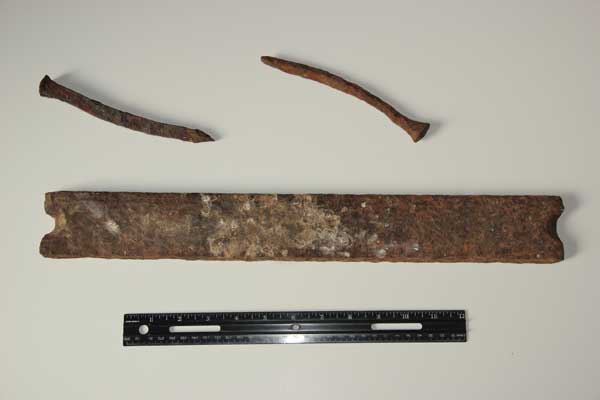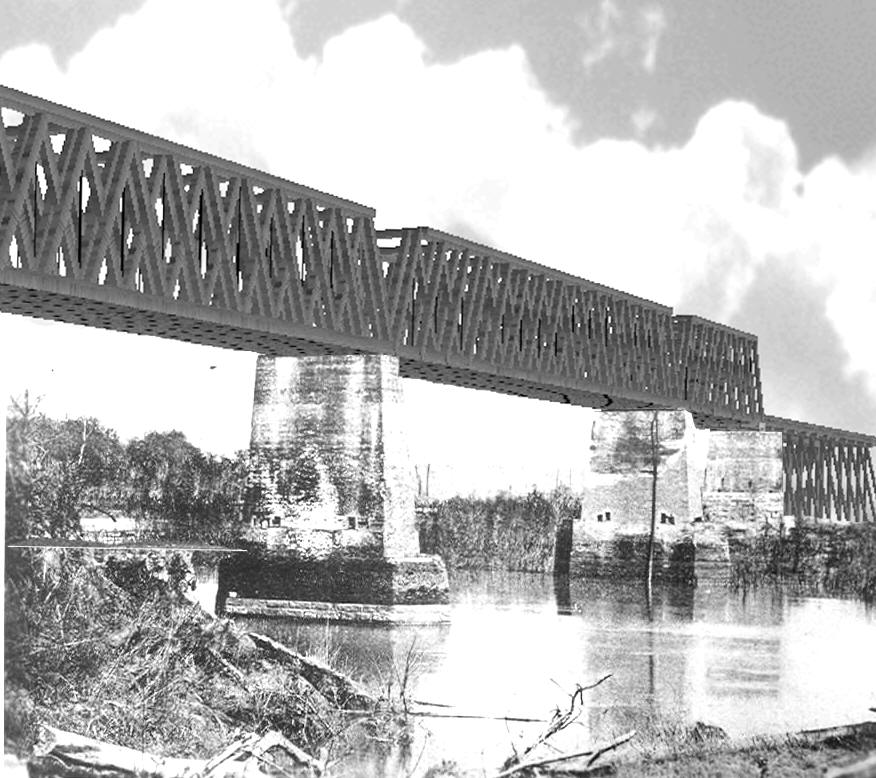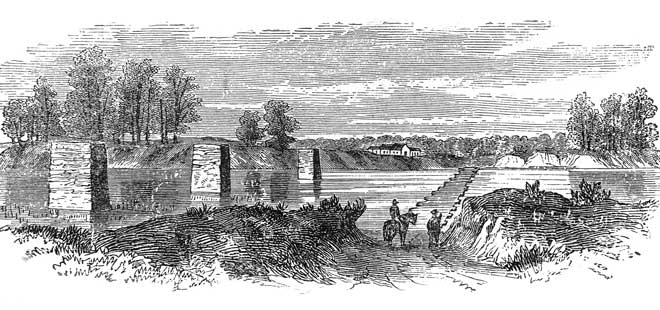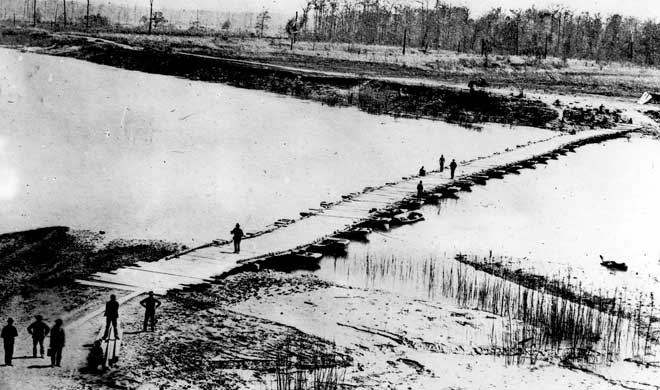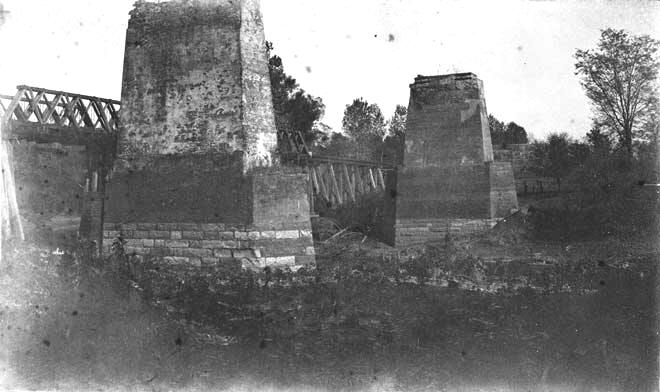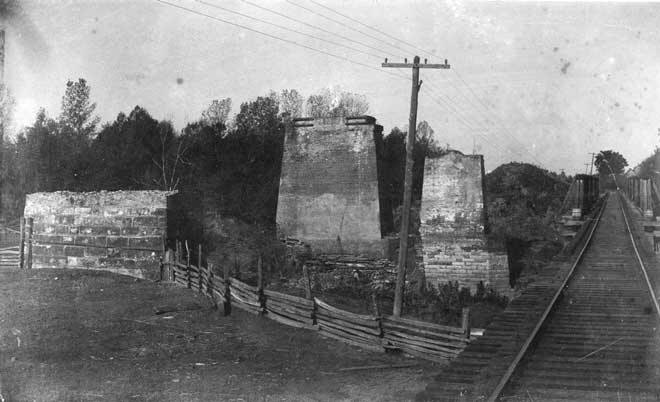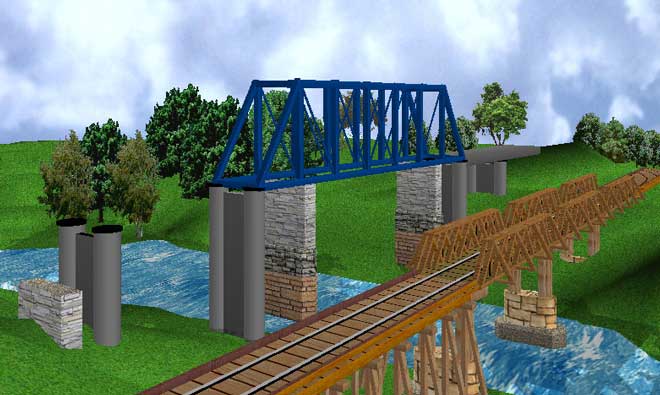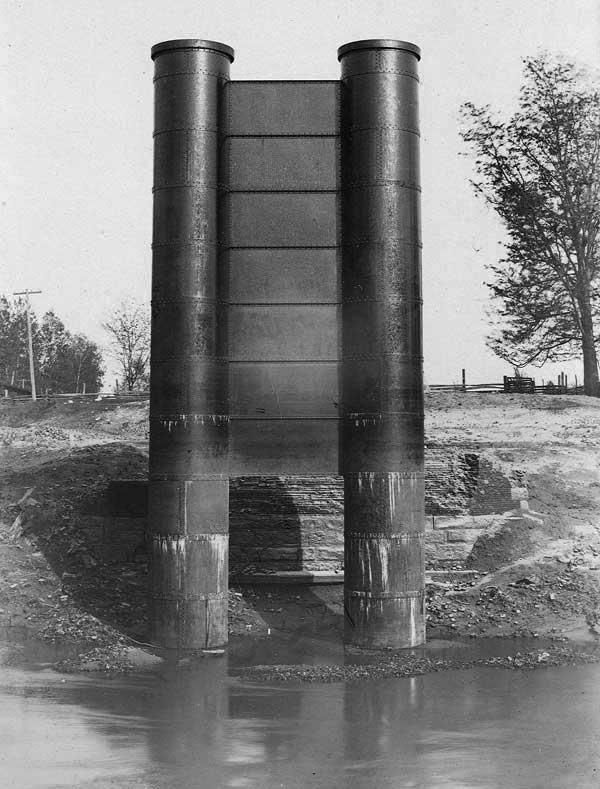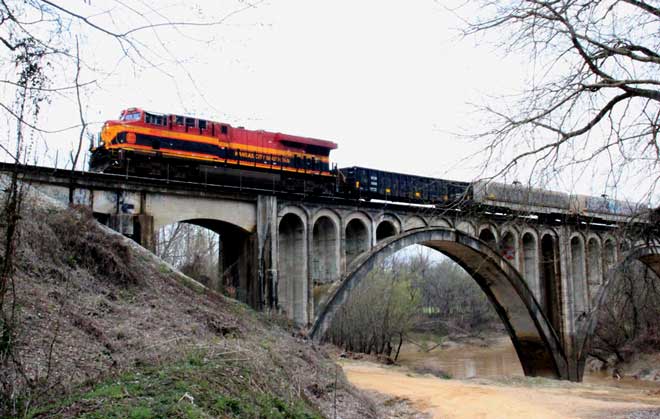|
By James L. Drake THE VICKSBURG TO JACKSON RAILROAD
The Vicksburg to Jackson railroad was begun in 1833. By 1838, the rail service was scheduled between Vicksburg to the Big Black River five miles east. However, construction of the railroad eastward progressed slowly because of the heavy cuts, high trestles and long bridge over the Big Black. A notice published in The Tennessean (Nashville), December 31, 1835,1 Sealed proposals will be received by the subscriber at Vicksburg, for the 1st and 10th of January next, inclusive, for the Grading, Bridging and Masonry on the eastern division of this Railroad extending from Big Black river to the town of Jackson, a distance of thirty-four miles. Three bridges of considerable magnitude to be let; one over Big Black river, 200 feet between the abutments, and two over Baker’s Creek, about 60 feet between the abutments; are Jobs well deserving the attention of experienced contractors. The Raymond Times (Raymond, Mississippi), May 18, 1839, announced that the railroad would be complete by October 1839:2 At Big Black the cars will be able to cross the bridge and truss working five or six weeks. On this side of the river several hundred hands are at work the—timber and rails are partly laid—and Judge Taylor assures us that there is every reason to believe that the cars will be running as far as the intersection with our railroad in October. Let them come on. We'll be ready to meet them. Before the the close of 1840, seven years after ground was broken in Vicksburg, the railroad reached Jackson. The road was built of wooden rails, set five feet apart, capped with strips of iron fastened to the rails by means of iron spikes, which worked their way through the rails to such an extent that it was necessary for trackmen to make daily trips over the line to drive them in. Those protruding spikes were known as snake heads.1 The entire construction of the Southern Railroad, for 140 miles, was not completed until June 1861, and for nine months previous to that date, the trains ran no farther east than Newton Station, 109 miles from Vicksburg.
1847 BRIDGE OVER BIG BLACK The first notice of the Big Black bridge and specifications was printed in The Mississippian, November 26, 1847,
On February 20, 1851, the central masonry pier, constructed in 1836-37, failed due to the changing river channel during a flood. The Vicksburg Whig, February 28, 1851, reported: On Thursday evening, [February 20th] about four o'clock, the central pier under the railroad bridge, at Big Black, fell from the pressure of the flood in that stream. On the morning of that day the watchman, whose duty it is to cross the bridge after the passage of every train, reported something wrong; on the arrival of the evening train from Vicksburg at Big Black, it was stopped by order of Mr. Crump, the Superintendent of the Road, while he went forward to examine; he found the central pier had yielded to the pressure of the water, and properly judging the passage to be unsafe, directed the train to return to Vicksburg; in a few moments the pier fell, (no part of it being visible above the high water) and left the bridge suspended by the adjoining piers, where it still remains, sunk in the centre of the truss about fifteen inches below its true level. The pier was of cut limestone, laid in hydraulic cement as high as high water mark, from that to the top of brick well grouted; the foundation was placed on piles driven twenty feet be low the bed of the stream; the cofferdams, composed of heavy timbers, filled with large stone. The pier was built in 1836-7 and has resisted every flood in Big Black up to the present time. During the Confederate Army retreat from Champion Hill, May 17, 1865, the bridge was burned to prevent Union forces from using it in pursuit. Major Samuel Lockett, Confederate engineer, had already prepared make-shift bridges over the Big Black should there be a need for an escape route. "In addition to the railroad bridge, which I had caused to be floored for the passage, even of artillery and wagons, the steamer Dot, from which the machinery had been taken, was converted into a bridge, by place her fore and aft across the river."
A WAR RAVAGED RAILROAD REBUILT Morris Emanuel, president of the Southern Railroad noted in his September 1865 report2: "At the close of the war we were left to contemplate its blighting effect on our road and property, as evidenced by our tracks torn up, crossties burned, rails bent, twisted and broken, bridges and culverts destroyed, depots burned, cars destroyed, and locomotives and all other machinery in a damaged condition." The company agreed to pay the Government the cost of the 52nd U.S. Colored Infantry were pressed into helping to rebuild the railroad, that was ravaged by the Union. A new bridge over the Big Black was opened in August 1866. William Morris, Civil Eng'r, in his November 1865 report on the condition of the Southern Railroad of Mississippi3:
The Daily Clarion, August 17, 1866, announced the bridge opening:
THE FINK BRIDGE FAILURE The “Fink Bridge” was used until 1875, when the west channel pier slid on its foundation and along the axis of the bridge, and yet, retained its perpendicularity. The movement of this pier wrecked the structure and traffic over the road was suspended for several weeks. A temporary “Pony” [a bridge without overhead members] bridge was built on a new location, north of the old structure, the grade being made very heavy to lessen the work and cheapen construction.
TRACK GAUGE (WIDTH) CHANGE Throughout the South, track gauges varied between railroad systems and within systems. The Vicksburg & Meridian route employed a gauge of 5' 0" whereas the standard width was 4' 8". In order to facilitate the transfer of equipment from one railroad to another it became necessary to change the gauge of the Vicksburg & Meridian to standard gauge. This was accomplished on October 23, 1885, when the gauge of the entire line from Meridian to Vicksburg, 152 miles including sidings, was changed in about 16 hours.
NEW STEEL BRIDGE OPENED IN 1895 A new steel structure was opened in October 1885 to replace the 1875 temporary "Pony" bridge. The Daily Commercial Herald, October 1, 1895, wrote:
In 1889 the Vicksburg & Meridian became a part of the Queen & Crescent System was subsequently known as the Alabama & Vicksburg Division became a part of the Illinois Central System on June 2, 19261. [The Vicksburg & Meridian went into receivership, October 20, 1885—Frank Bond, president of Queen and Crescent system was appointed receiver].
1919 CONCRETE BRIDGE The present concrete bridge was built in 1917-19 by the Blodgett Construction Company under the direction of Mr. T. J. Newell. The structure contains more than 4,250 cubic yards of concrete, was designed and built at a cost of $122,645 for the Alabama and Vicksburg Railway. In April 1919, the old steel bridge was removed using two wreckers and flat cars to receive the steel pieces weighing as much as 75 tons. The old steel cased concrete piers were cut to the water level.
|
|||||||
|
| Home | Grant's March | Pemberton's March | Battle of Champion Hill | Order of Battle | Diaries & Accounts | Official Records | | History | Re-enactments | Book Store | Battlefield Tour | Visitors | Copyright (c) James and Rebecca Drake, 2018. All Rights Reserved. |
